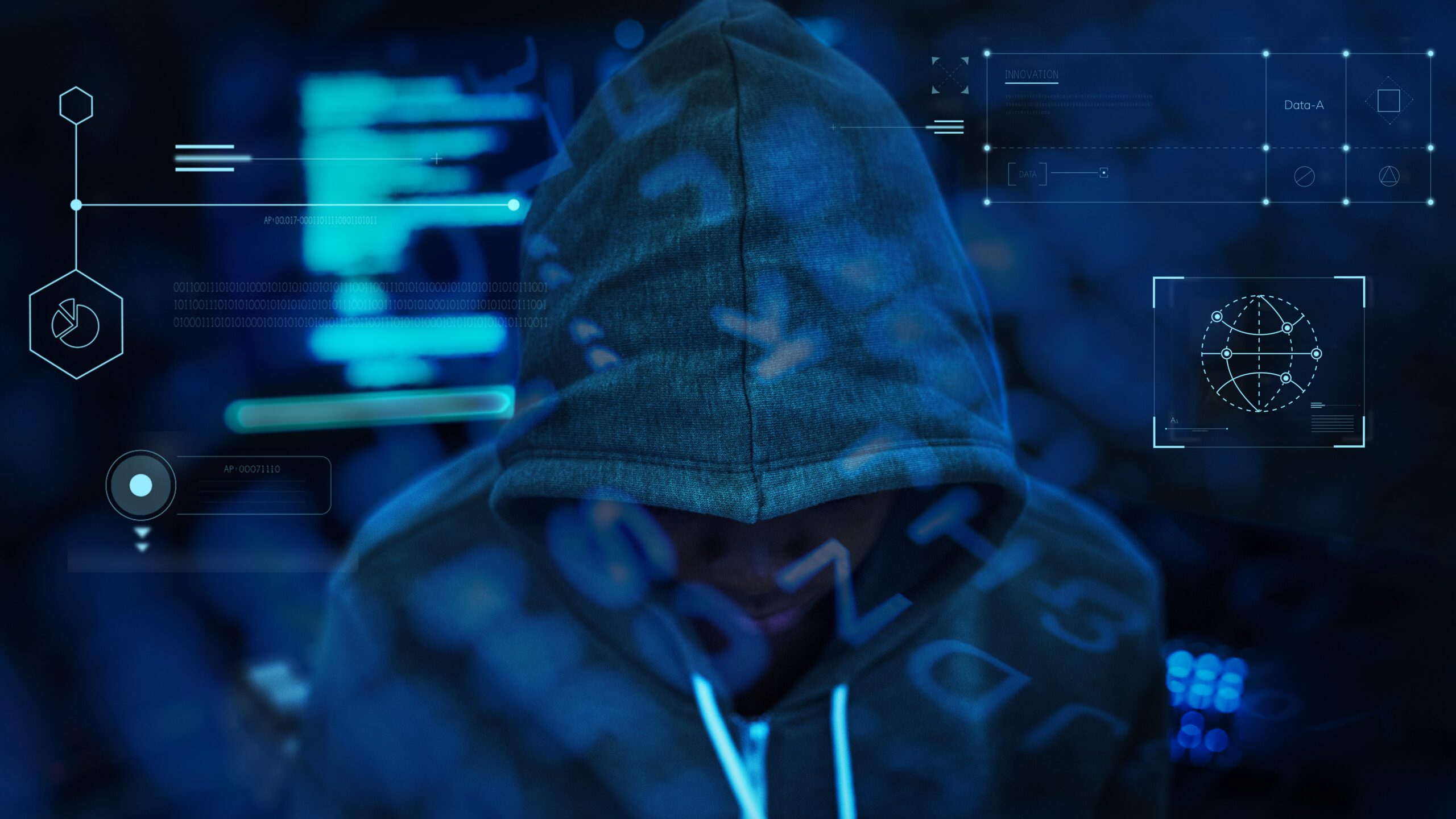Who is this blog for?
This blog post is for IT leaders who are looking to provide non-technical decision-makers with the information they need to understand the importance of cyber security. Those Sales and Marketing Managers, Human Resources Managers, CFOs, and others like them, helping them make informed decisions about investing in cyber security solutions. It also offers practical tips for bridging the knowledge and awareness gap between technical and non-technical decision-makers, and for convincing non-technical decision-makers of the importance of cyber culture.
Read time: 5 minutes
—
Cyber security is often seen as an IT issue, but it is essential for all businesses, regardless of size or industry. SMBs are particularly vulnerable to cyber-attacks, as they often lack the resources and expertise to implement robust cyber security measures.
A new study by Sage has found that UK SMBs are struggling with cyber security preparedness. The study found that:
-
-
- 57% of UK SMBs are asking for more support with education and training on cyber security.
- 51% of global SMBs say that keeping on top of new cyber security threats is their biggest challenge.
- 45% of UK SMBs do not understand what cyber security measures are needed for their business.
-
Despite these challenges, only 48% of UK SMBs plan to increase their cyber security investment next year. 29% of UK SMBs say that the cost of living has reduced their cyber security budget.
Overall, the study found that UK SMBs are aware of the importance of cyber security, but they are struggling to keep up with the latest threats and invest in the necessary security measures. Luckily, there are steps SMBs can take to make cyber security a business priority and protect themselves from cyber threats.
Source: Cyber Security for SMBs: Navigating Complexity and Building Resilience (sage.com)

Why Cyber Security Matters to Everyone in the Business
Cyber security is not just an IT concern; it is a critical aspect for all individuals involved in a business. As an IT leader, you know that cyber-attacks can have a devastating impact on organisations of all sizes, regardless of industry.
But why should everyone in the business care about cyber security? Here are a few reasons:
-
-
- Cyber-attacks can damage your brand reputation. When customers learn that their data has been compromised in a cyber-attack, they are more likely to lose trust in your company. This can lead to lost revenue, damaged relationships, and even regulatory scrutiny.
- Business operations could be interrupted, or completely stopped. If your systems are hacked or your data is encrypted, it can bring your business to a standstill. This can lead to lost productivity, financial losses, and even customer churn.
- Attacks on your data can lead to legal liability. If your company is found to be negligent in protecting customer data, you could be facing lawsuits and regulatory fines.
-
Here are some specific examples of how cyber-attacks can impact different departments and the organisation as a whole:
-
-
- Sales and marketing: Your customer database could be exposed, leading to lost sales and damaged relationships.
- Finance and accounting: An attack could lead to financial losses, such as theft of funds or fraudulent transactions.
- Human resources: A cyber-attack could expose employee data, such as salary information or other confidential data. This could lead to identity theft and other problems for your employees.
- Operations: If you are attacked, it could disrupt your supply chain or production lines, leading to lost productivity and lost revenue.
-
Bridging the Gap: Unlocking Knowledge and Awareness
One of the biggest challenges in making cyber security more of a business priority, is bridging the knowledge and awareness gap between technical and non-technical decision-makers. Technical decision-makers often have a deep understanding of the latest threats and technologies, but non-technical decision-makers may not have the same level of expertise. This can lead to a disconnect in decision-making, with non-technical decision-makers not fully appreciating the risks and benefits of different cyber security solutions.
There are several things that can be done to bridge this gap, including:
Cracking the Code: Empowering Non-Tech Leaders on Cybers Security Risks
This can be done through formal training programs, informal workshops, or one-on-one conversations. It is important to use plain language and avoid jargon so that everyone can understand the information.
Unveiling the Real Cost: Cyber Security as Business Risks and Impacts
Non-technical decision-makers are more likely to be interested in cyber security if they understand how it can impact the bottom line. For example, you can explain how a data breach could lead to lost revenue, reputational damage, and legal liability.
Fortifying Your Future: The Advantages of Investing in Cyber Security
If you’re not investing in cyber security, you’re sure to be left exposed and vulnerable. With advancements in AI, businesses must elevate their cyber security game to match the evolving tactics of cyber adversaries.
Convincing Non-Technical Decision Makers of the Importance of Cyber Culture
Cyber-culture is the set of attitudes, values, and behaviours that define how people interact with technology. It is important to have a strong cyber culture in place to protect against cyber threats.
Non-technical decision makers may not be aware of the importance of cyber culture, or they may not know how to create a strong cyber culture. Learn how to bridge the gap and emphasise the relevance of protecting digital assets in today’s interconnected landscape. Here are some tips for convincing non-technical decision makers of the importance of cyber culture:
Explain the connection between cyber culture and cyber security. A strong cyber culture can help to reduce the risk of cyber-attacks by making employees more aware of the risks and more likely to follow security best practices.
Provide examples of successful cyber culture programs. There are many companies that have implemented successful cyber culture programs. Sharing examples of these programs can help non-technical decision makers to understand what is possible and how to get started.
Make cyber culture a priority for the entire organisation. Cyber culture is not just the responsibility of the IT department. It is important to get buy-in from all levels of the organisation, including non-technical decision makers. This can be done by emphasising the importance of cyber culture in all-staff meetings, training programs, and other communications.
How to Embed Cyber Thinking in Business Culture
As an IT leader, you play a key role in fostering a cyber security-focused mindset across your organisation. Here are a few tips:
-
-
- Get buy-in from senior management. Cyber security needs to be a top-down priority, management needs to understand the importance of cyber security and support the implementation of a cyber security culture.
- Communicate the importance of cyber security to all employees. Help employees to understand the risks of cyber-attacks and the role they play in protecting the organisation. This can be done through training programs, awareness campaigns, and regular reminders. There are readily available phishing simulation toolkits available that can give you immediate insight into the insider threats.
- Empower employees to report suspicious activity. Make it easy for employees to report suspicious activity without fear of retaliation. This will help you to identify and respond to threats quickly and effectively.
- Reward employees for good cyber security behaviour. Recognise and reward employees who follow cyber security best practices and empower them to challenge suspicious behaviours. This will help to reinforce the importance of cyber security in the workplace.
-
By following these tips, you can help to embed cyber thinking in your organisation’s culture and create a more secure environment for everyone.

Conclusion
In today’s hyperconnected world, cyber security is no longer an IT department’s afterthought; it’s an indispensable business imperative. Organisations that fail to prioritise cyber security risk not only jeopardise their data and systems but also their reputation, financial stability, and very existence. As an IT leader, it’s your responsibility to champion cyber security awareness and empower your company to embrace a culture of security.
Every employee, from the CEO to the receptionist, plays a crucial role in protecting the organisation’s assets. By fostering a culture of security, we can instil a mindset where everyone is vigilant, informed, and committed to safeguarding their digital ecosystem.
To achieve this transformation, we must bridge the knowledge gap between technical and non-technical decision-makers. Non-technical leaders often lack a deep understanding of cyber security intricacies, making it challenging for them to grasp the potential impact of security breaches. It’s our duty to translate technical jargon into plain language, emphasising the real-world consequences of cyber-attacks on the organisation’s bottom line and reputation.
Furthermore, we must frame cyber security not as a cost but as an investment in the organisation’s future. Cyber security measures are not mere expenses; they are strategic assets that safeguard our intellectual property, customer data, and brand integrity. By demonstrating the tangible benefits of cyber security investments, we can secure the buy-in of non-technical stakeholders and secure the resources needed to fortify our defences.
Cyber security is a journey, not a destination. It requires continuous vigilance, adaptation, and innovation. As IT leaders, we must stay abreast of evolving threats, adapt our strategies accordingly, and empower our teams with the latest tools and training. By embracing cyber security as a shared responsibility and prioritising it as a business imperative, we can create a resilient organisation that thrives in the face of ever-increasing cyber threats.




